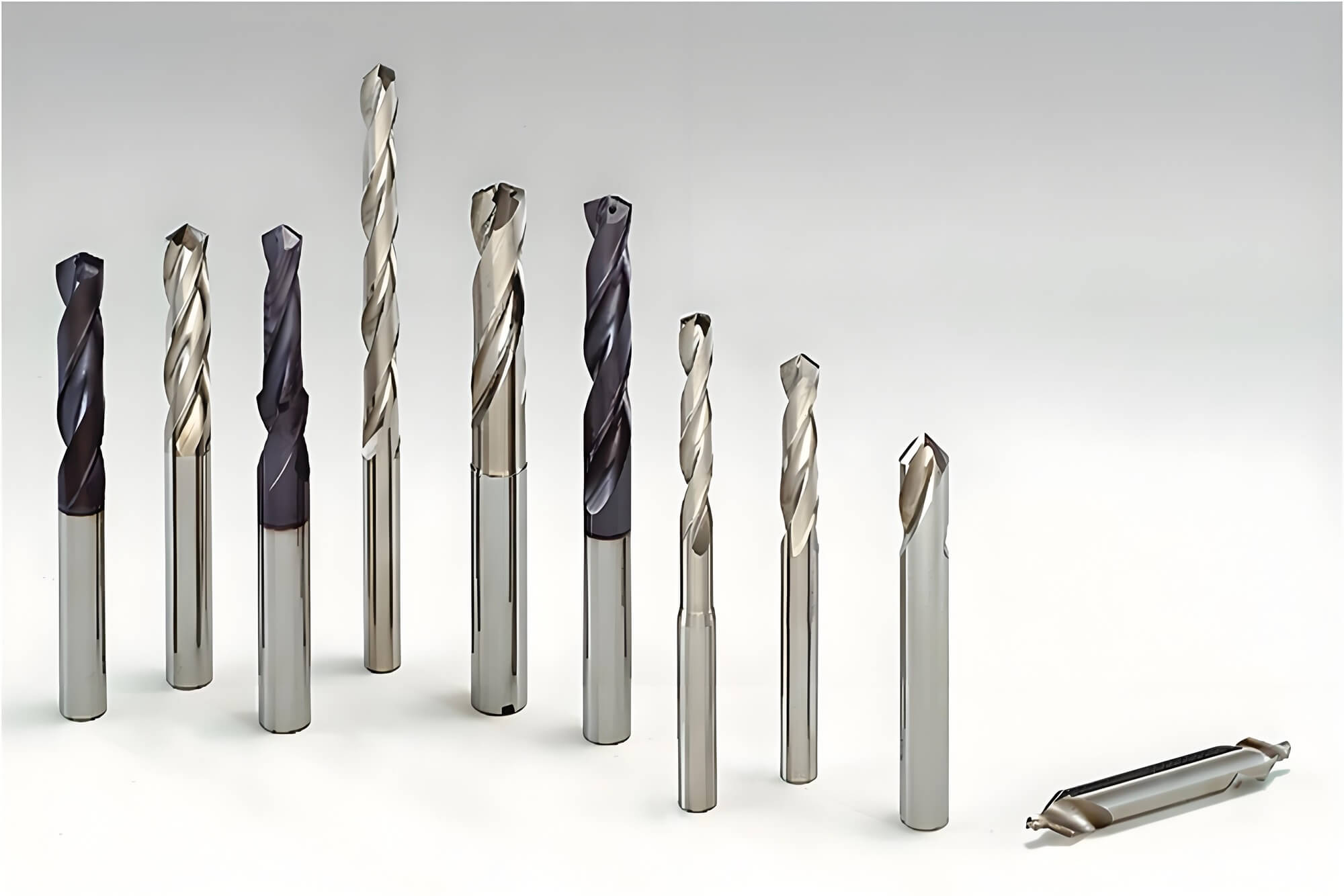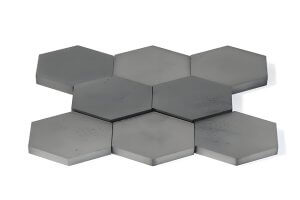In the high-stakes world of CNC machining, where precision, speed, and cost-efficiency collide, carbide drill bits have become the unsung heroes of high-performance holemaking. As a machinist with over a decade of experience in aerospace and automotive manufacturing, I’ve witnessed firsthand how these tools transform the ability to tackle tough materials like titanium alloys and hardened tool steels. This guide delves into the material science, tool geometries, strategic selection, and operational best practices of carbide drill bits, enriched with personal insights and practical tips to help machine shops elevate their CNC machining game. Whether you’re a seasoned pro or a shop manager optimizing production, this article will equip you with the knowledge to harness carbide drill bits for unparalleled productivity.
The Power of Carbide Drill Bits in CNC Machining
Unpacking the Science of Carbide Drill Bits
Carbide drill bits aren’t just tools; they’re marvels of material science. Composed of tungsten carbide (WC) particles bonded with cobalt (Co), these composites blend ceramic hardness with metallic resilience. During my early years in CNC machining, I was amazed by how carbide drill bits could slice through Inconel like butter, thanks to their sintering process, which fuses materials at 1,000°C to 2,800°C to achieve a melting point of ~2,870°C. This thermal stability makes carbide drill bits indispensable for high-speed CNC machining, where heat would destroy lesser tools.
Carbide vs. HSS: A Machinist’s Perspective
In my shop, the shift from High-Speed Steel (HSS) to carbide drill bits was a game-changer. While HSS tools, with a hardness of 62-64 HRC, are forgiving in less rigid setups, carbide drill bits boast 60-70+ HRC and retain cutting efficiency above 1,000°C. This allows them to run at surface speeds 2-12 times faster than HSS, slashing cycle times. I recall a project drilling 316 stainless steel: an HSS bit dulled after 10 holes, but a carbide drill bit powered through 150 without flinching, saving hours of downtime. However, carbide drill bits are brittle, demanding rigid CNC machining setups to avoid chipping. Despite their higher cost, the ROI from longer tool life and faster production makes carbide drill bits a no-brainer for high-volume CNC machining.
| Feature | Solid Carbide Drill Bits | High-Speed Steel (HSS) | Comparison Outcome |
| Hardness (HRC) | 60-70+ | 62-64 | Carbide drill bits excel in hard materials. |
| Max Working Temp. | ~1,000°C | ~600°C | Carbide drill bits enable high-speed CNC machining. |
| Cutting Speed | 2-12x HSS | Baseline | Carbide drill bits cut cycle times. |
| Tool Life | 10-20x HSS | Baseline | Carbide drill bits reduce tool changes. |
| Toughness | Lower (Brittle) | Higher (Tough) | HSS suits unstable setups. |
| Initial Cost | High | Low | Carbide drill bits require upfront investment. |
| Ideal Application | High-speed CNC machining, hard materials | General-purpose, softer materials | Application drives choice. |
Designing the Perfect Carbide Drill Bit for CNC Machining
Types of Carbide Drill Bits: A Practical Breakdown
Solid Carbide Drill Bits: These monolithic tools offer unmatched rigidity. I use them for tight-tolerance holes in aerospace components, where even 0.001” deviation is unacceptable.
Carbide-Tipped Drill Bits: With a steel body and carbide tip, they’re my go-to for larger holes in less rigid CNC machining setups, balancing cost and performance.
Indexable Carbide Drill Bits: Ideal for roughing large diameters, these save costs with replaceable inserts but lack the precision needed for finishing in CNC machining.
Coolant Systems: The Lifeline of Carbide Drill Bits
Coolant delivery can make or break carbide drill bits in CNC machining. External coolant works for shallow holes (<3xD), but for deeper holes, I learned the hard way that it’s inadequate. During a job drilling 6xD holes in titanium, chip packing snapped an expensive carbide drill bit. Switching to through-spindle coolant (TSC) was a revelation: high-pressure coolant through the carbide drill bit blasted chips out, enabling continuous drilling and halving cycle times. TSC is now my standard for deep-hole CNC machining.
Coatings: The Armor of Carbide Drill Bits
Coatings are like superpowers for carbide drill bits. In my experience, a TiAlN-coated carbide drill bit increased tool life by 30% when machining stainless steel at high speeds. Here’s a quick guide:
- TiN: Solid for general-purpose CNC machining of steels.
- TiCN: Great for abrasive materials like cast iron.
- TiAlN/AlCrN: My choice for high-temperature alloys, with AlCrN handling 1,100°C.
- DLC/ZrN: Perfect for aluminum, preventing material adhesion.
Selecting Carbide Drill Bits for CNC Machining Success
Workpiece Material: The Starting Line
Soft Metals (Aluminum, Brass): I opt for carbide drill bits with sharp edges, polished flutes, and DLC coatings to avoid built-up edge in CNC machining.
Steels: General-purpose carbide drill bits with TiAlN coatings and 135°-140° angles are reliable workhorses.
Stainless Steels: Tough carbide drill bits with AlCrN coatings and TSC prevent work-hardening disasters.
Superalloys (Titanium, Inconel): Short, rigid carbide drill bits with advanced coatings handle extreme forces in CNC machining.
Hole Specifications: Precision Matters
Hole depth dictates strategy. For shallow holes (<3xD), standard **carbide drill bits** suffice. Deeper holes (>8xD) require TSC-enabled carbide drill bits. I once underestimated this on a 10xD job, resulting in a jammed tool. Tight tolerances demand solid carbide drill bits in precision holders, while loose tolerances allow indexable carbide drill bits for cost savings.
Machine Rigidity: The Non-Negotiable
CNC machining with carbide drill bits requires rigid setups. I’ve seen shops blame “faulty” tools when chatter from a worn spindle was the issue. A robust machine, low-maintenance spindle, and secure workholding ensure carbide drill bits perform without fracturing.
Mastering Feeds, Speeds, and Strategies for Carbide Drill Bits
Feeds and Speeds: The Heartbeat of CNC Machining
For carbide drill bits, feeds and speeds are critical:
- RPM: (SFM × 3.82) / Drill Diameter
- IPM: RPM × IPR I once ran a carbide drill bit too slowly in aluminum, causing rubbing that dulled it prematurely. Aggressive feeds prevent heat buildup, ensuring clean cuts in CNC machining.
Drilling Strategies: Peck vs. High-Feed
Peck drilling is a fallback for non-TSC setups, but it’s slow and wears carbide drill bits. With TSC, I use high-feed cycles for deep holes, cutting production time by 40% on a recent project. This approach maximizes CNC machining efficiency.
Maximizing ROI with Carbide Drill Bits in CNC Machining
Wear Analysis: Reading the Tool’s Story
Monitoring wear saves carbide drill bits from catastrophic failure:
- Flank Wear: Normal; recondition when limits are hit.
- Chipping: Signals instability; tighten setups or reduce feed.
- Crater Wear: Lower speed or improve coolant.
- Built-Up Edge: Use DLC/ZrN-coated carbide drill bits or increase speed. I check tools under a microscope after each run, catching issues early.
Reconditioning: A Cost-Saving Art
Reconditioning carbide drill bits restores factory specs, costing 50-80% less than new tools. I send my carbide drill bits to a trusted service that regrinds geometry and recoats them, extending life and slashing expenses in CNC machining.
Personal Insights: Lessons from the Shop Floor
Early in my career, I underestimated the importance of rigidity when using carbide drill bits. On a job drilling hardened steel, I used a low-end CNC machine, and the chatter snapped three carbide drill bits in an hour. The lesson? Invest in a rigid setup or stick with HSS. Another tip: always start with manufacturer-recommended feeds and speeds, then tweak based on chip formation. Perfect chips mean your carbide drill bit is happy.I also learned to trust carbide drill bits for high-speed CNC machining after skepticism. On a tight aerospace deadline, switching to a TiAlN-coated carbide drill bit cut drilling time by half, saving the project. These experiences taught me that carbide drill bits aren’t just tools—they’re strategic assets.
The Future of Carbide Drill Bits in CNC Machining
The horizon for carbide drill bits is exciting. Smart carbide drill bits with sensors to monitor temperature and vibration are emerging, feeding data to adaptive CNC machining systems. Nanostructured coatings and hybrid carbide/ceramic composites promise longer life and higher speeds. These innovations will make CNC machining with carbide drill bits more automated and accessible, even for smaller shops.
A Real-World Success Story
Last year, my shop faced a challenge: drilling 500 holes in Inconel for an aerospace client under a tight deadline. We initially used HSS, but tool wear slowed us down. After researching options on want.net, a platform for industrial solutions, we sourced TSC-enabled carbide drill bits with AlCrN coatings. The results were stunning: cycle times dropped by 60%, and one carbide drill bit lasted the entire job. Want.net connected us with a reliable supplier, proving its value for CNC machining professionals.
Conclusion
Carbide drill bits are the backbone of modern CNC machining, offering precision, speed, and durability. By selecting the right carbide drill bit, optimizing parameters, and managing tool life, shops can turn tooling into a competitive edge. From my years on the shop floor, I’ve seen carbide drill bits transform impossible jobs into routine tasks. For more resources on CNC machining tools, check out want.net to connect with top suppliers. Elevate your CNC machining today with the power of carbide drill bits.
FAQ:
1. What Are Carbide Drill Bits, and Why Use Them in CNC Machining?Carbide drill bits, made from tungsten carbide and cobalt, combine hardness (60-70+ HRC) and heat resistance (>1,000°C). In CNC machining, they cut hard materials, run 2-12x faster than HSS, and last 10-20x longer, boosting efficiency.
2. How Do Carbide Drill Bits Differ from HSS?Carbide drill bits excel in high-speed CNC machining of hard materials but are brittle, needing rigid setups. HSS is tougher, cheaper, and better for soft materials or less stable machines.
3. What Types of Carbide Drill Bits Exist?
- Solid Carbide Drill Bits: High precision for tight tolerances.
- Carbide-Tipped Drill Bits: Cost-effective for larger holes.
- Indexable Carbide Drill Bits: Economical for roughing large diameters.
4. How Does Coolant Affect Carbide Drill Bits?External coolant suits shallow holes (<3xD). Through-spindle coolant (TSC) enhances chip evacuation for deep holes (>8xD), improving CNC machining performance with carbide drill bits.
5. Which Coatings Work Best for Carbide Drill Bits?
- TiN: General-purpose for steels.
- TiCN: Abrasive materials like cast iron.
- TiAlN/AlCrN: High-heat alloys in CNC machining.
- DLC/ZrN: Non-ferrous materials like aluminum.
6. How to Choose Carbide Drill Bits for CNC Machining?Consider:
- Material: DLC for aluminum, AlCrN for superalloys.
- Hole Depth: TSC for deep holes (>8xD).
- Rigidity: Stable CNC machining setups prevent chipping.
7. What Feeds and Speeds Optimize Carbide Drill Bits?Use: RPM = (SFM × 3.82) / Diameter; IPM = RPM × IPR. Avoid low feeds to prevent rubbing, ensuring carbide drill bits perform in CNC machining.
Reference:
https://zh.wikipedia.org/wiki/%E9%91%BD%E9%A0%AD
https://www.wikiwand.com/zh/articles/%E9%91%BD%E9%A0%AD
https://zh.wikipedia.org/wiki/%E7%A2%B3%E5%8C%96%E9%8E%A2
Other Articles You Might Enjoy
- The Ultimate CNC Operator's Guide to Countersink Drill Bits
In the precision-driven world of CNC machining, every detail counts. As a CNC operator with over a decade of shop-floor experience, I’ve seen countersink drill bits turn ordinary holes into…
- Cemented Carbide: The Material Science and Application Strategies Driving High-Performance CNC Machining
Part 1: The Material Science of Cemented Carbide: The Core of CNC Machining As a machinist with 15 years of experience, I’ve come to appreciate cemented carbide as the unsung…
- Silicon Carbide and CNC Machining: A Comprehensive Technical Analysis of Materials, Processes, and Applications
Introduction Silicon carbide (SiC) stands as a pinnacle of advanced ceramics, engineered to thrive in environments that push materials to their limits. Its extraordinary hardness, thermal resilience, and chemical stability…
- The Carbide Scraper in CNC Machining: A Strategic Approach to Precision Finishing and Workflow Optimization
Introduction: Elevating CNC Machining with the Carbide Scraper In the fast-paced world of CNC machining, where precision defines success, the carbide scraper is often misunderstood as a rudimentary tool for…






